Every carpenter, electrician, plumber, HVAC contractor, and home inspector should know the rules for allowable cuts and holes into floor joists. Cuts and holes are known in the trades as notching and boring, respectively. The rules for notching and boring come from section 502.8 of the International Residential Code, which addresses cutting, drilling, and notching. Today I’m only focused on traditional dimensional lumber, like 2x8s or 2x12s. I’ll discuss holes in manufactured floor joists, aka I-joists, in next week’s blog post.
Rules for boring/drilling holes
To start, here’s the diagram that comes right out of the codebook.
You can put holes in floor joists anywhere along the length of the joist, but you can’t put them any closer than 2″ from the top or bottom edge of a joist. The maximum size of a hole is 1/3 the depth of the floor joist. Dimensional lumber will always be a little smaller than the stated dimension unless you’re dealing with some ancient lumber. For example, a 2×4 actually measures 1-1/2″ x 3-1/2″. For floor joists, here are the maximum hole sizes for common floor joist sizes:
- 2×6 (5-1/2″) ~ 1-13/16″
- 2×8 (7-1/4″) ~ 2-3/8″
- 2×10 (9-1/4″) ~ 3-1/16″
- 2×12 (11-1/4″) = 3-3/4″
If you’re dealing with rafters, these same rules apply.
Rules for notching
The codebook has two diagrams for notching; one at the ends of the joist, and another for notching anywhere else. Let’s start with the easier one, notching at the ends.
You’re allowed to notch 1/4 of the joist depth at the end of a joist. For some common sizes, here are the maximum notches allowed:
- 2×6 (5-1/2″) = 1-3/8″
- 2×8 (7-1/4″) = 1-13/16″
- 2×10 (9-1/4″) = 2-5/16″
- 2×12 (11-1/4″) = 2-13/16″
For anywhere other than the ends, we use a different diagram.
You’re not allowed to do any notches in the middle third of a floor joist span, and you’re not allowed to notch the bottom side of members over 4″ in nominal thickness. For anything else, you’re allowed to notch 1/6 of the joist depth deep, and 1/3 of the joist depth wide. Here are the maximum numbers for some common sizes:
- 2×6 (5-1/2″) ~7/8″ deep, 1-13/16″ wide
- 2×8 (7-1/4″) ~ 1-3/16 deep, 2-3/8″ wide
- 2×10 (9-1/4″) ~ 1-1/2″ deep, 3-1/16″ wide
- 2×12 (11-1/4″) = 1-7/8″ deep, 3-3/4″ wide
Summary
When any of these rules are violated, it’s a judgment call. When these rules a fudged just a little bit, I usually don’t make a big deal about it, especially if it looks like it has been that way for a long time. These numbers always assume the maximum loading for a floor, along with the maximum spacing of a floor joist. But when these rules are egregiously broken, that’s when it’s time to call in a carpenter for repairs. And note, I didn’t say to call in an engineer for further evaluation. This is basic floor framing, and any qualified carpenter ought to be able to make repairs without having to do a bunch of difficult math.
And just for fun, here are a few classics we’ve found over the years.

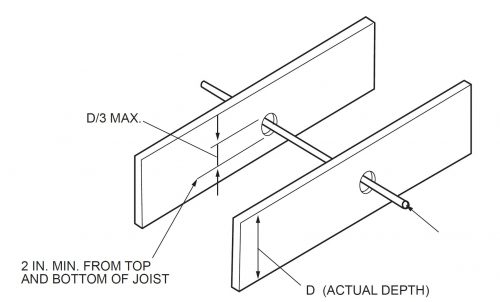
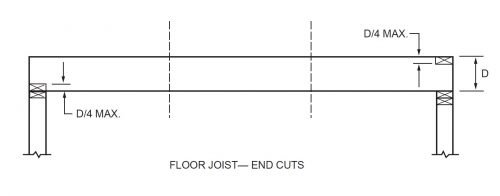
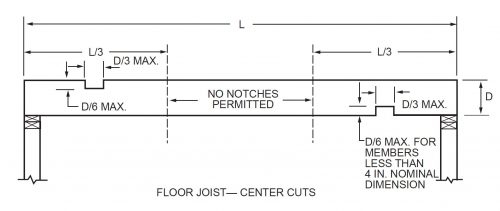
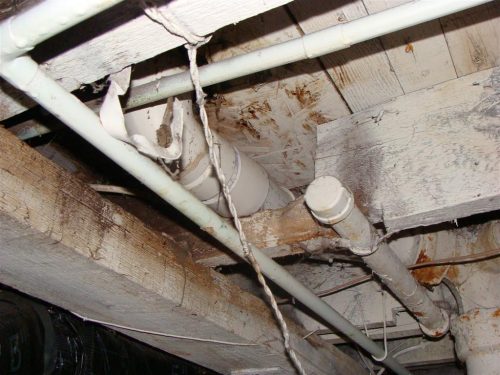
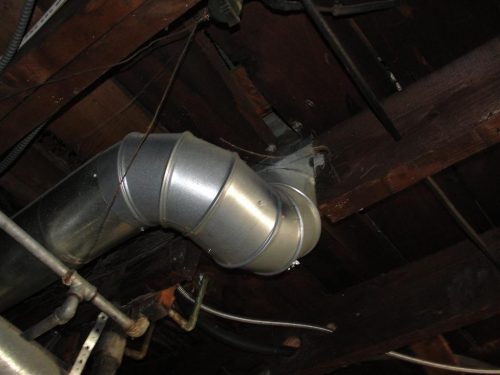
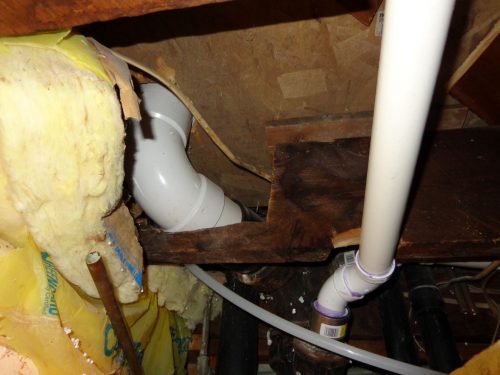
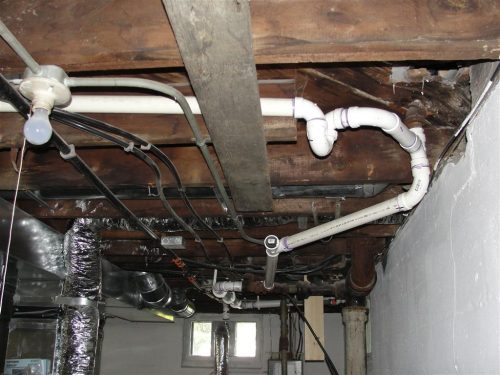
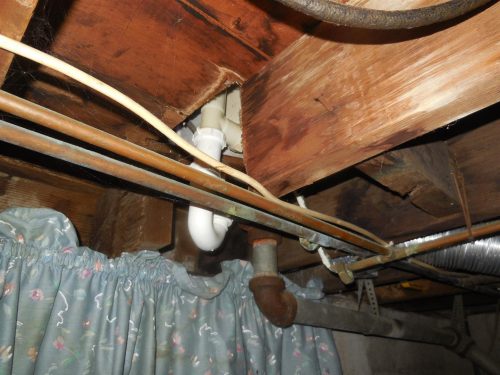
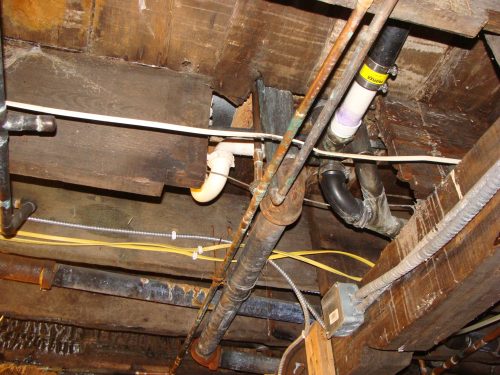
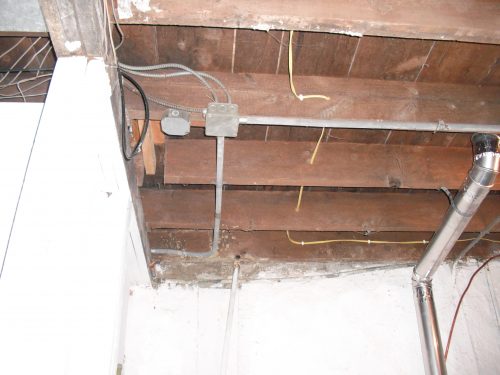
Sam
September 21, 2021, 6:44 am
Ruben you are always spot on, Great video I really enjoy watching them. Thank you for all your hard work. Sam